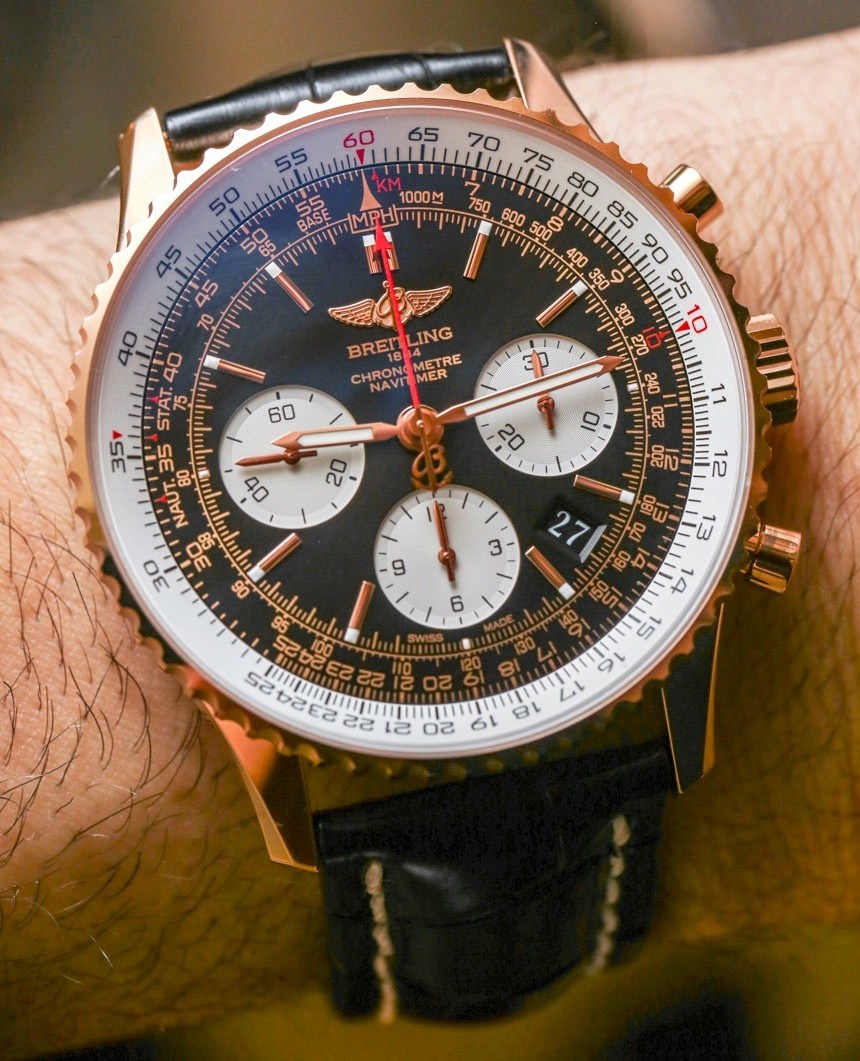
I’ve always respected the Breitling Navitimer, but it was never “historically” on my list of “must-own classics” for my own personal collection. Now, after wearing and reviewing one of the newer Breitling Navitimer 01 watches, I have to say that my opinion toward the watch has certainly developed for the better, and I certainly think there is a place for a Breitling Navitimer in my collection – because once you get to know this collection you begin to understand why it is so popular and why Breitling has been producing what is essentially a piece of archaic computational equipment for more than 50 years. Now, if only it weren’t a solid gold version of the Navitimer that I fell in love with…
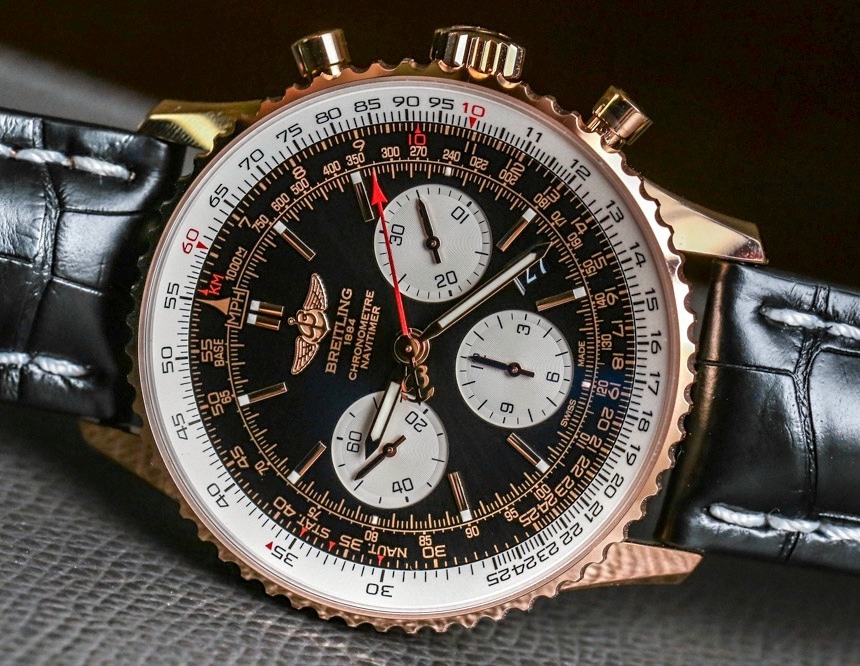
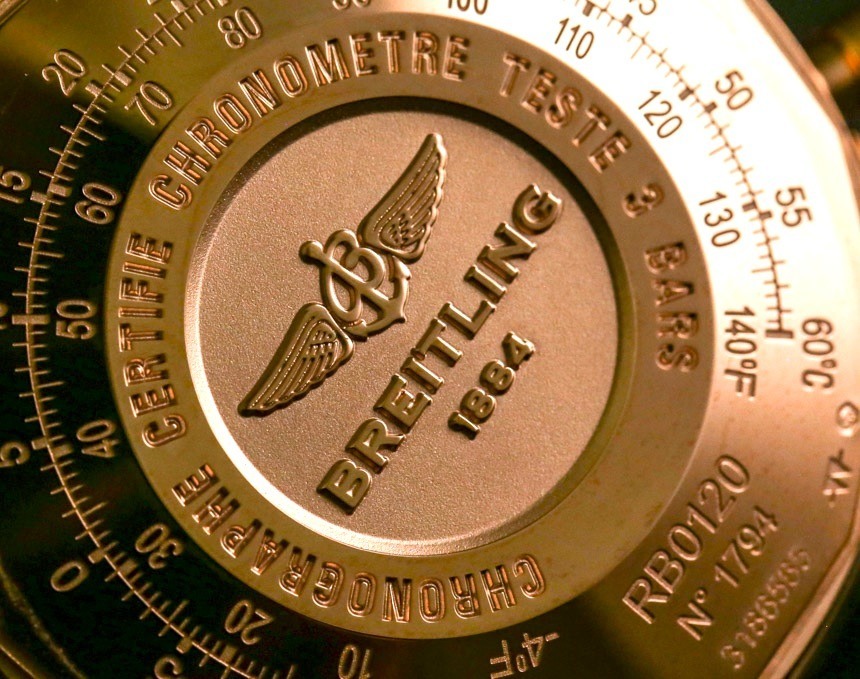
A few years ago, we published an article on “The Top 10 Living Legend Watches” that included the Breitling Navitimer because of its good looks and long production (in some form or another). Today, the Breitling Navitimer exists in what is arguably its best forms that also include in-house-made Breitling movements. This particular version of the Breitling Navitimer includes the Breitling Calibre 01 – which is their most popular in-house automatic chronograph (as well as being the first in-house movement they released). With that said, Breitling offers a truly dizzying array of Navitimer watches, and as such, picking the right one can be truly intimidating.
On the Breitling website right now, there are eight distinct model families of the Navitimer, each with a range of versions therein. This Breitling Navitimer 01 model with its 43mm-wide case itself has six different styles (again, not including the limited editions) depending on the case, dial, and strap option. You can opt for this watch in a polished steel case or in this polished 18k red gold case. Each is available on strap or bracelet (yes, a full gold bracelet is available) as well as some black or brown dial options. On top of that, you can opt for dials that use these baton-style hour markers or that have Arabic numeral options. And again, this is just the various current (non-limited edition) models for the Breitling Navitimer 01. That doesn’t includes other model families such as the Navitimer 01 46mm, Navitimer QP, Navitimer World, and Navitimer GMT – which each have their own unique elements and sub-varieties.
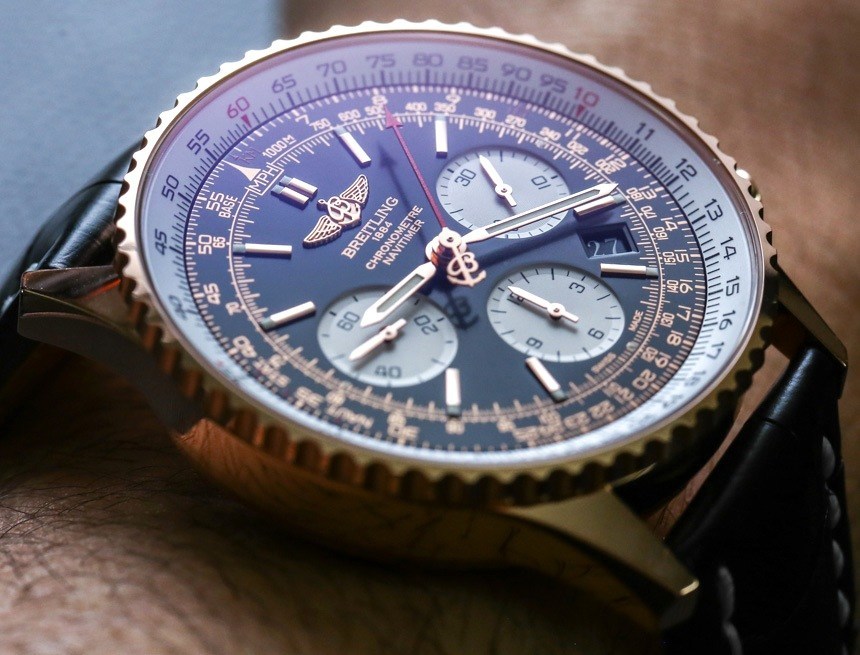
That means you’ll be forgiven if you’ve been eyeing a Breitling Navitimer for a while but haven’t pulled the trigger yet because you aren’t sure what version. Unfortunately, I am not going to be able to tell you the best Navitimer model for you, but I will help you narrow it down based upon your needs and tastes. The first step is figuring out the size you want, as Breitling produces the Navitimer in 42mm, 43mm, 46mm, and 48mm wide cases. From there, you need to figure out whether you want an in-house made movement, or don’t mind a sourced Swiss ETA movement, and what dial as well as case material you are looking for.
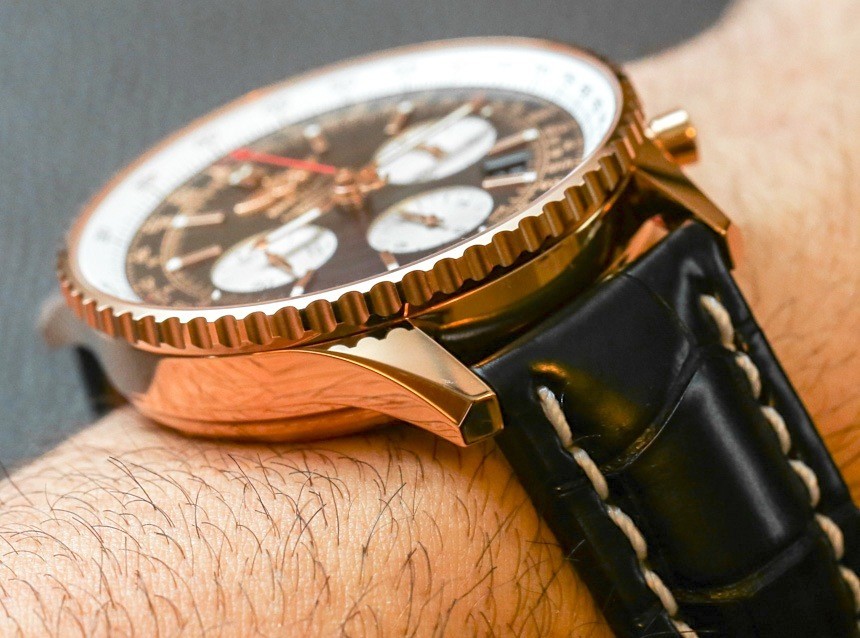
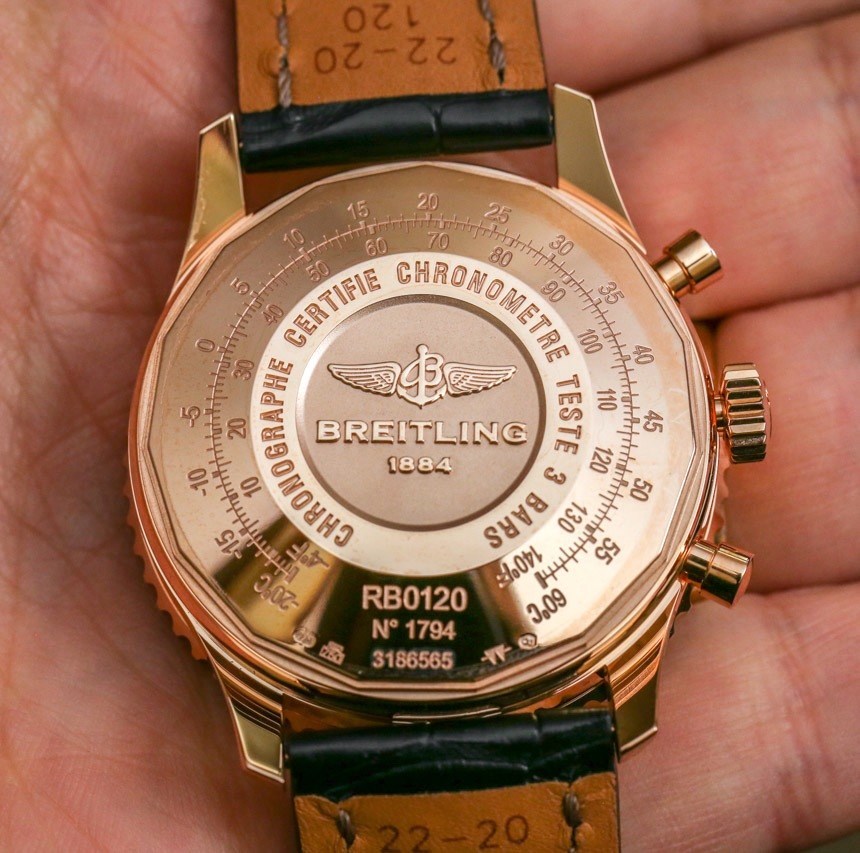
There also happens to be a rather wide range of prices that I believe start at around $6,500 for the Breitling Navitimer World in steel (this model contains the Breitling Caliber 24 which is a base Swiss ETA Valjoux 7750), and of course goes up from there to about $60,000 for the Navitimer QP (perpetual calendar) in 18k gold on a strap. Interestingly, this 18k gold version of the 43mm-wide Breitling Navitimer 01 on the full gold bracelet costs about $11,000 less at around $48,000.
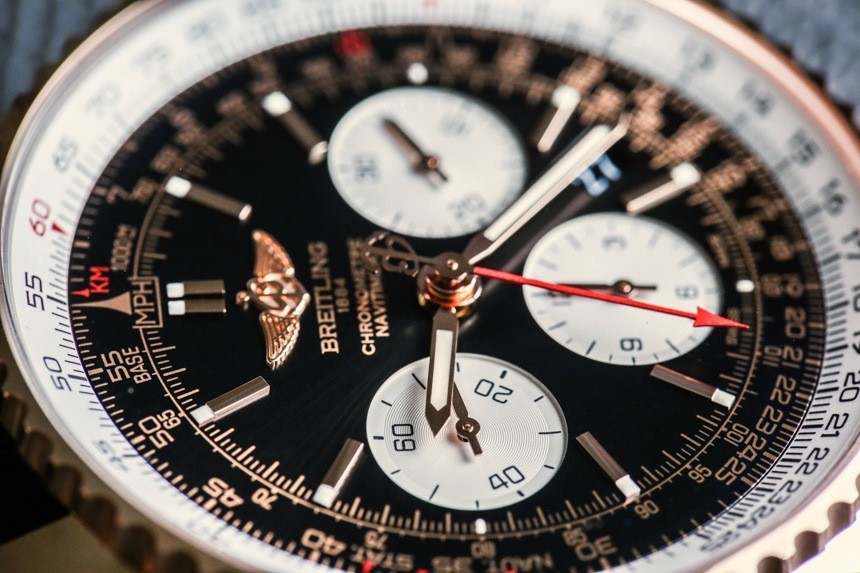
As you can see, Breitling enjoys a lot of sales success with the handsome Navitimer, but your options as a consumer are truly staggering. For me, the best-looking Navitimer watches have a “panda dial,” just like this model, which tend to have a black face with contrasting white-colored subdials. This marks a key element of the “Navitimer look” that I think a lot of consumers are looking for. With that said, the Navitimer dial comes in a range of versions including face colors that are black, silver, blue, and brown.
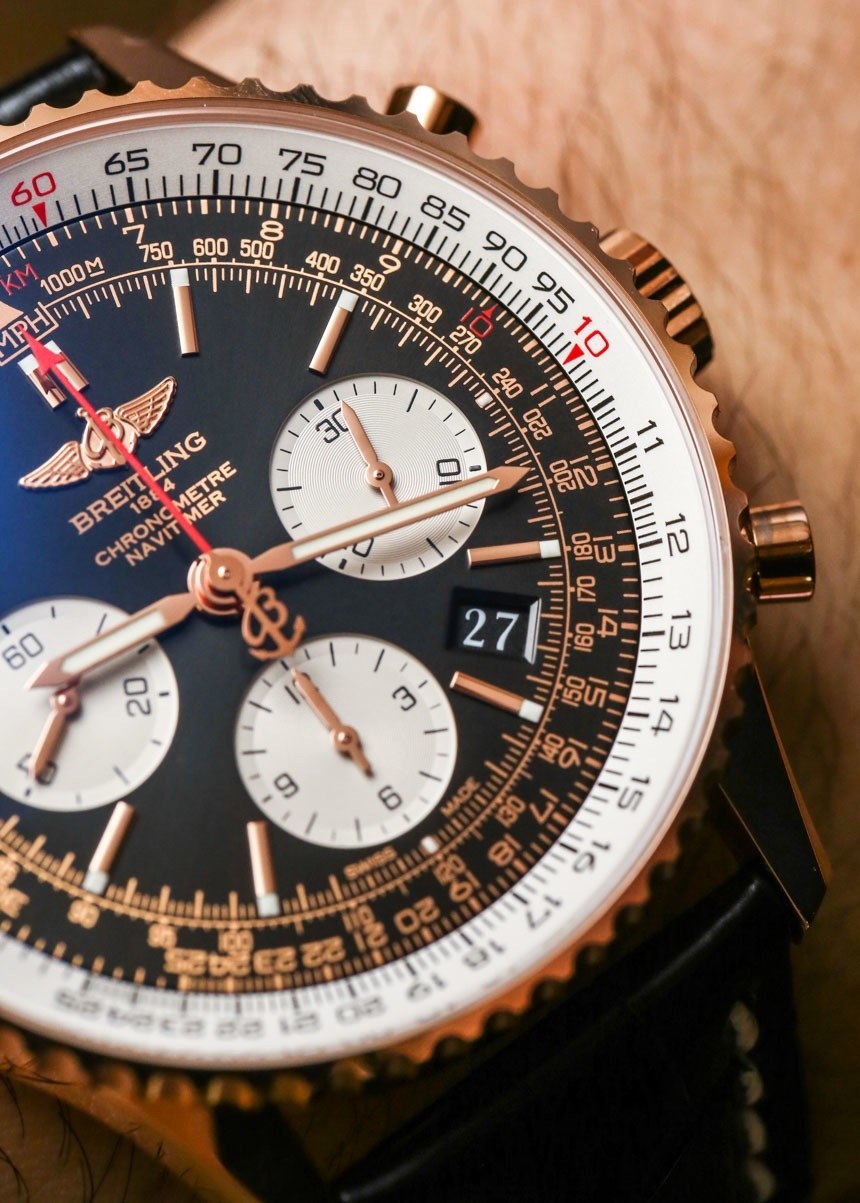
In fact, this is the second review of a Breitling Navitimer 01 watch that we’ve published on aBlogtoWatch. Here, you can read our Max’s 2012 review of this Breitling Navitimer 01 watch in steel which talks a lot about why someone who loves watches and is an engineer would really want a Navitimer. My goal isn’t to repeat what Max said but rather to talk about the Breitling Navitimer 01 from my own perspective. In gold, the feeling of the watch does change, and I really do think this is one of the few luxury watches that you can wear in gold and still come across as practical given that in many ways the Breitling Navitimer is a non-showy luxury watch (that is still a bit showy).
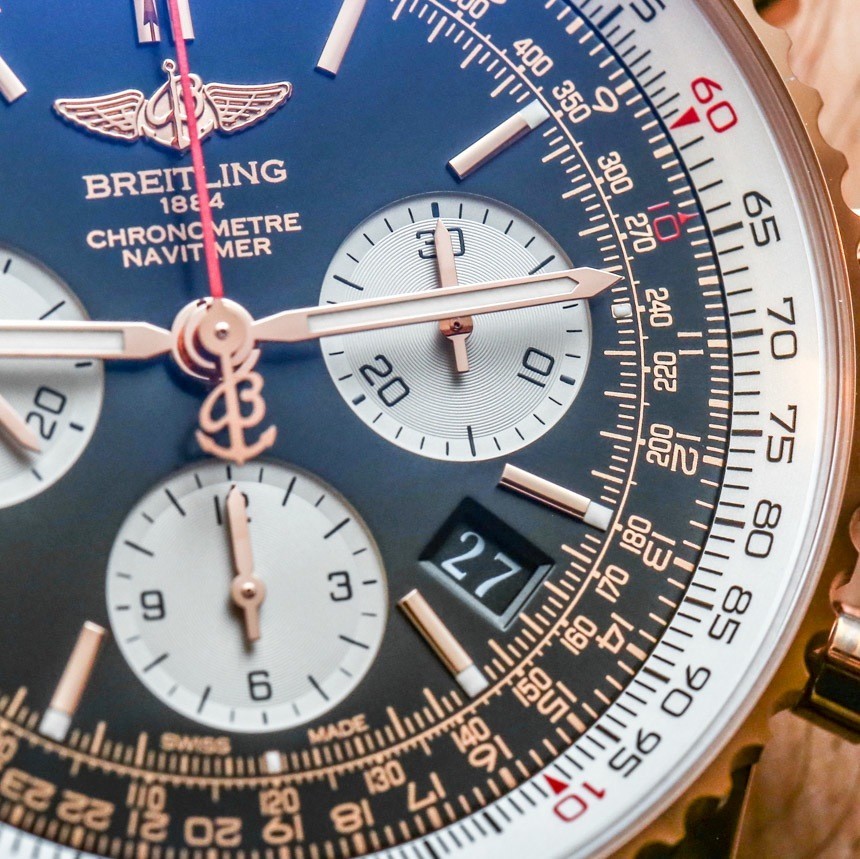
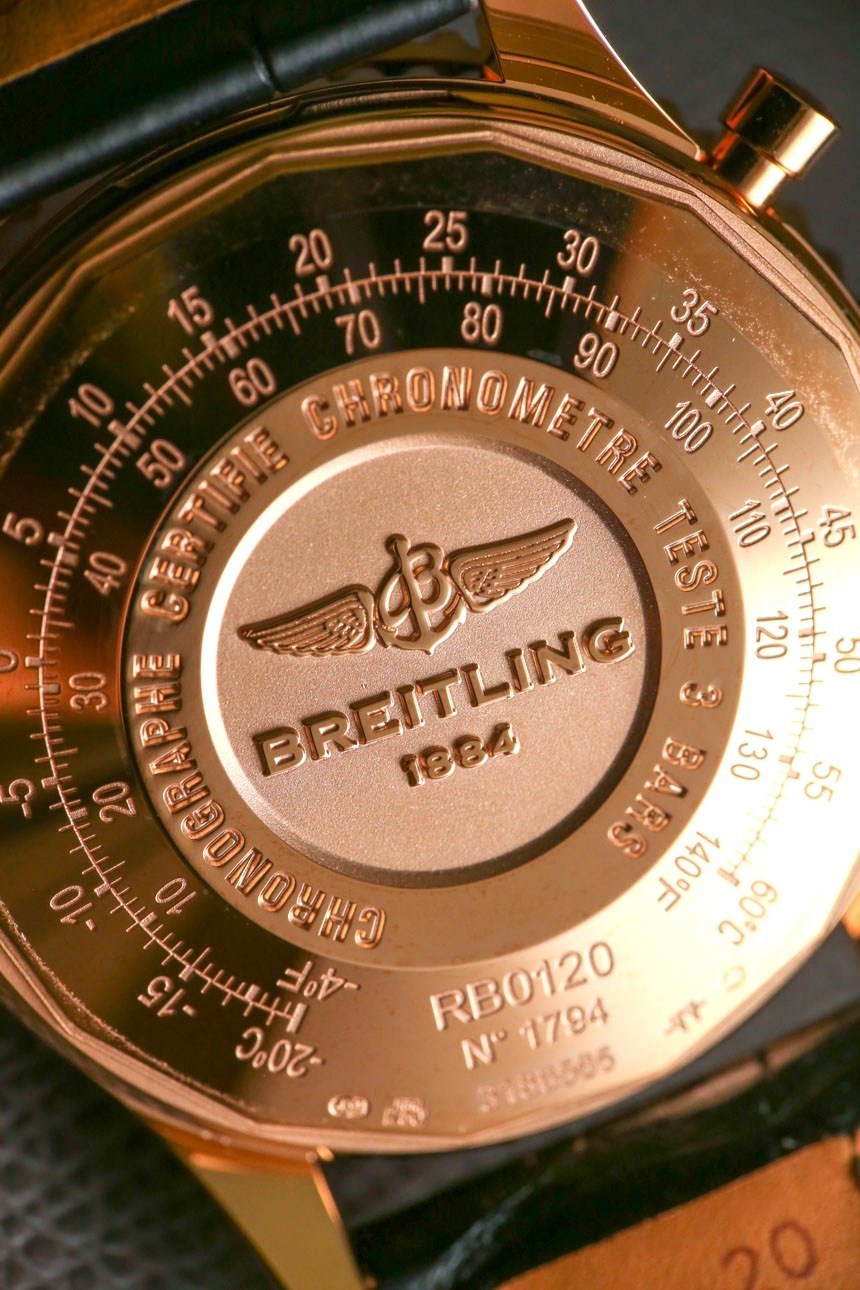
The purpose-driven design of the Breitling Navitimer is really its savior when it comes to not being a pretentious timepiece. Nothing about the design is about flair or presentation and understanding the history of the watch’s utility for pilots allows you to understand why the time plus chronograph and slide-rule bezel came in very hands in a pre-computer age. In the 1950s when the Breitling Navitimer was first introduced, it was a pretty big deal to have a timepiece with a built-in slide-rule calculator bezel.
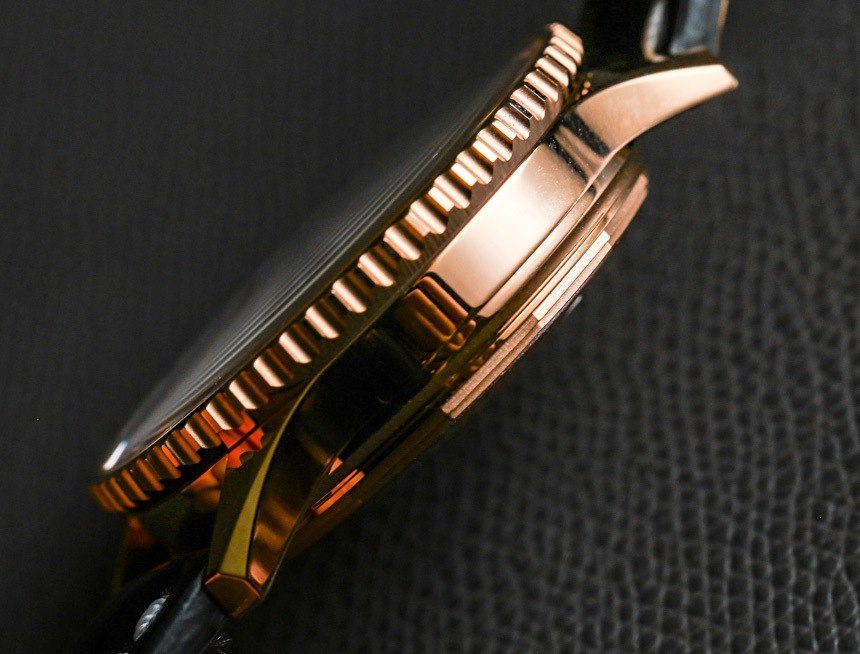
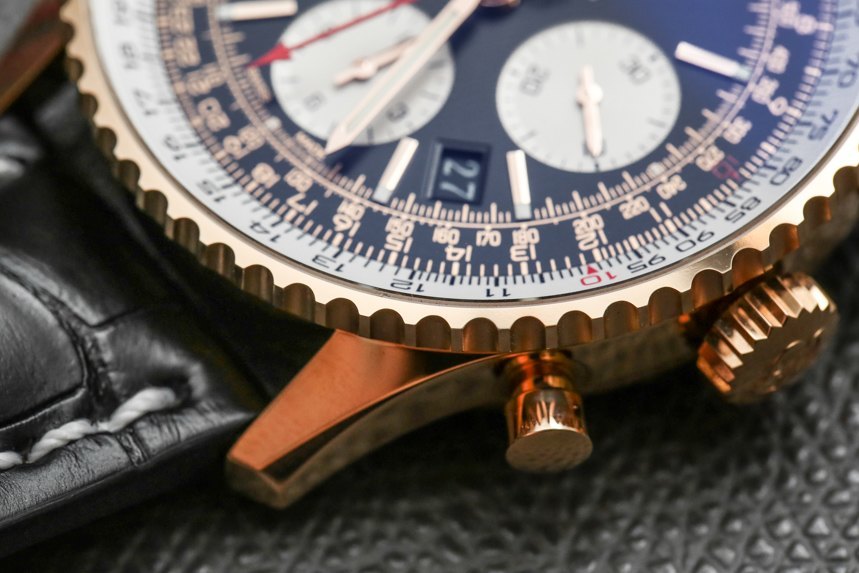
Today, no one uses this feature (for the most part), but they still show up on watches, and no one is producing slide-rule bezels as well as Breitling, with their sense of silky smooth and assured precision turning under your fingers. Being the watch nerds we are, there is an aBlogtoWatch article here that explains how to use a slide rule bezel (for most of you who have not ever used one). Slide-rules are one of many such vestigial yet historically functional features you’ll find on mechanical watches. A more simple example is something like the tachymeter scale used to measure distances that you will also often find on chronograph sport watches. Many of these scales were relied upon in the days of pre-electronic calculation and still show up as design markers on watches today. One could make an argument that such elements are mere accouterments being more or less useless by today’s standards. I would not disagree, but I can report that without them these timepieces don’t have the same feeling to them.
